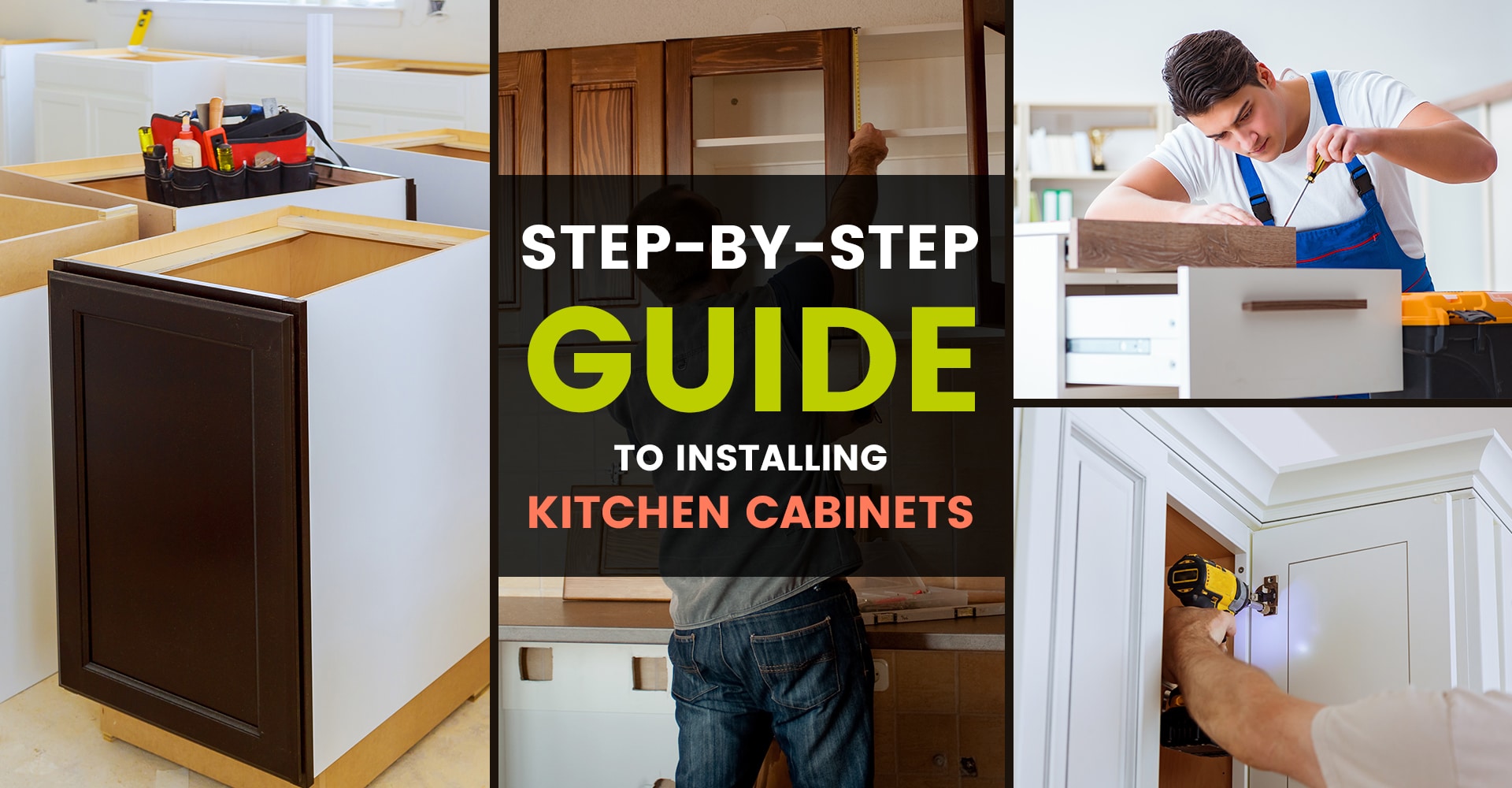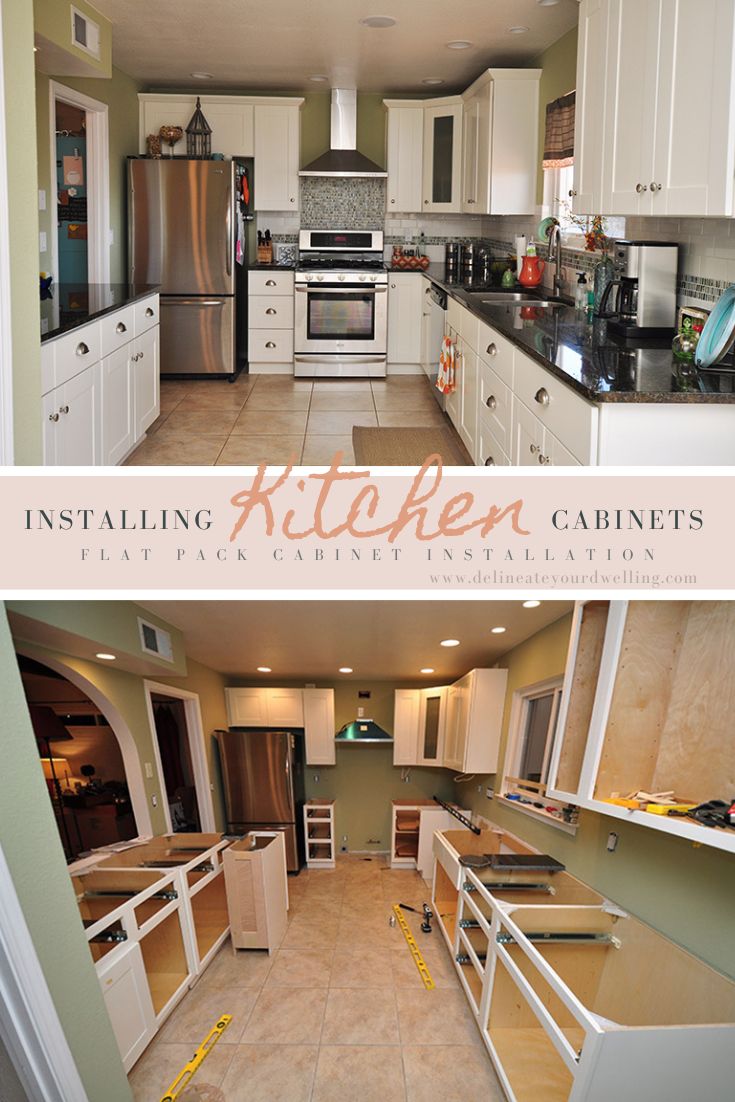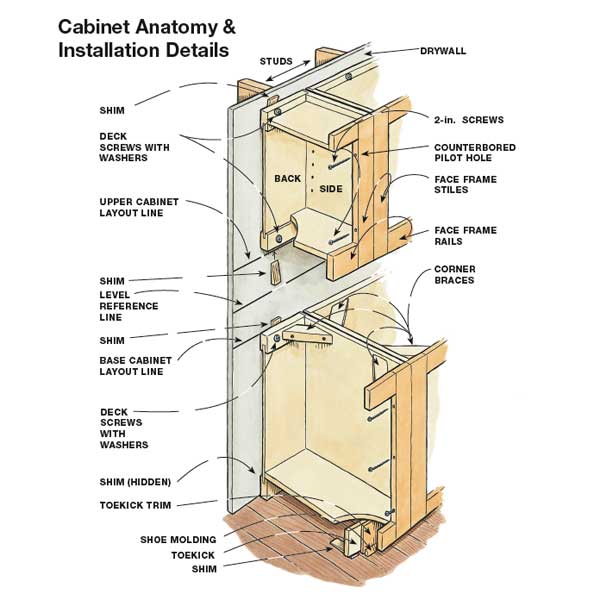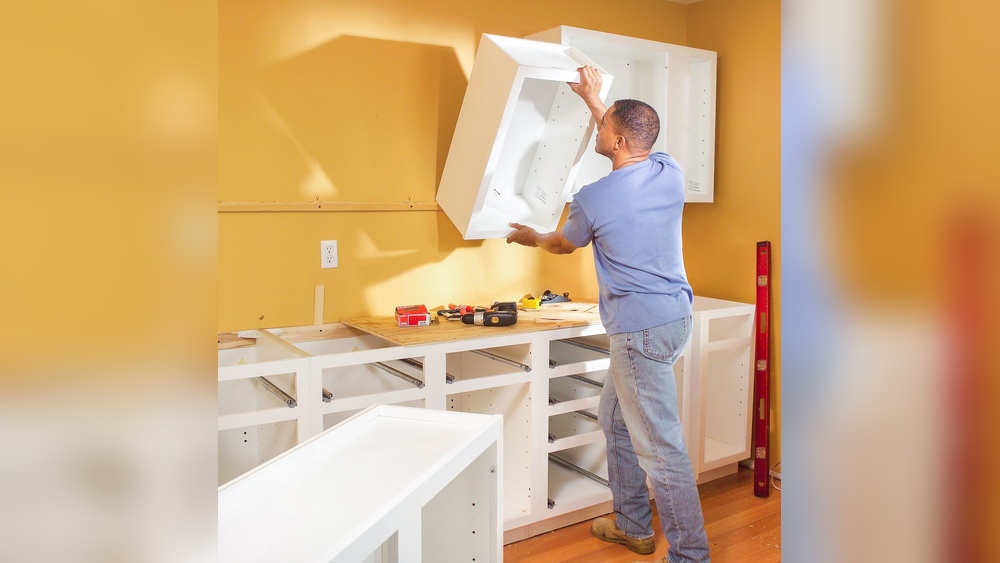Are you ready to transform your kitchen but unsure how to start with installing cabinets? Installing kitchen cabinets might seem tough at first, but with the right approach, tools, and a bit of patience, you can handle it yourself and save a lot on labor costs.
Imagine having your kitchen look exactly how you want it, crafted by your own hands. This guide will walk you through every step, from finding the studs in your walls to making sure each cabinet is perfectly level and secure.
Whether you’re a beginner or have tried DIY projects before, you’ll discover simple tips and tricks to avoid common pitfalls and get professional-looking results. Keep reading, and soon you’ll have the confidence to install your kitchen cabinets like a pro!

Tools And Materials
Essential tools include a drill, screwdriver, level, tape measure, stud finder, and a pencil. A clamp helps hold cabinets in place during installation. Safety gear like gloves and goggles is also important.
Required materials are kitchen cabinets, screws, shims, and mounting brackets. Use wood glue for extra strength. Wall anchors may be needed if studs are not in the right spot. A caulk gun with sealant finishes the job neatly.
Preparation Steps
Turn off all utilities like electricity and water before starting. This step keeps you safe from shocks and leaks. Remove old fixtures carefully to avoid wall damage. Take down old cabinets, handles, and screws. Clean the area well after removal.
Locate wall studs using a stud finder or by tapping the wall. Mark the studs clearly with a pencil. Cabinets must be fastened to these studs for strong support. Knowing their exact position helps in measuring and drilling.
Planning Cabinet Layout
Start by measuring the walls carefully. Mark where each cabinet will go. Use a level to keep marks straight.
Uneven walls can cause problems. Check for bumps or dips. Use shims to make cabinets fit tightly against the wall.
Pick a starting point for your cabinets. Usually, begin at the corner or near the sink. This helps keep the layout balanced and easier to adjust.

Installing Base Cabinets
Start by attaching a ledger board to the wall. This supports the base cabinets during installation. Make sure it is level and securely fastened to the wall studs.
Next, place the corner base cabinet first. Position it against the wall and check for level. Use shims under the cabinet if needed to keep it straight.
Level each cabinet carefully before securing it with screws through the back into the wall studs. This step prevents uneven doors and drawers.
| Step | Action |
|---|---|
| 1 | Attach ledger board level to the wall |
| 2 | Install corner base cabinet first |
| 3 | Level cabinets with shims as needed |
| 4 | Screw cabinets securely to wall studs |
| 5 | Connect adjacent cabinets by clamping and screwing them together |
Finally, clamp adjacent cabinets together and fasten through the sides. This creates a solid, connected base for your kitchen.
Installing Wall Cabinets
Start by removing doors and shelves from the wall cabinets. This makes the cabinets lighter and easier to handle. Use a temporary ledger board screwed into the wall to support the cabinet weight during installation. Lift each cabinet carefully and place it on the ledger. Secure the cabinet to the wall studs with screws through the back panel. Use a level to check that the cabinet is straight horizontally. Also, check for vertical straightness, called plumb, by using a level against the cabinet sides. Adjust screws or shims if needed to make the cabinet perfectly level and plumb. This ensures proper alignment for doors and shelves later. Repeat these steps for each wall cabinet until all are installed securely and straight.
Finishing Touches
Attach the cabinet doors and hardware carefully. Make sure hinges are tight and doors open smoothly. Check alignment and adjust if needed.
Fill all gaps between cabinets and walls with caulk. This stops dust and small insects from entering. Use a putty knife to smooth the caulk for a clean look.
Install molding and trim around the cabinets. This covers any rough edges and gives a finished look. Nail the trim gently to avoid damage.
Common Challenges
Finding and hitting studs is key for strong cabinet support. Use a stud finder and mark the spots clearly. Cabinets screwed into drywall alone won’t hold well.
Leveling and plumb issues happen often. Cabinets must be perfectly level and straight. Use a level tool and adjust with shims if needed. Uneven cabinets cause problems later.
Handling heavy cabinets can be tough for one person. Get help to avoid damage or injury. Lift with your legs, not your back. Secure cabinets quickly to keep them stable.
Dealing with out-of-square walls requires extra care. Walls may not be perfectly straight or square. Scribe the cabinet edges to fit the wall shape. This keeps gaps small and the look neat.
Tips For Beginners
Working with a helper makes the job easier and safer. One person can hold cabinets while the other secures them. This teamwork helps avoid mistakes and saves time.
Take your time to avoid rushing. Rushing can lead to errors and damage. Install cabinets slowly and carefully for the best results.
Always double-check measurements before cutting or drilling. Measure twice, cut once. This simple rule helps prevent costly mistakes and wasted materials.

Frequently Asked Questions
How To Install Kitchen Cabinets For Beginners Step By Step?
Measure and mark stud locations on the wall. Remove cabinet doors and shelves. Install a temporary ledger board for support. Mount base cabinets first, ensuring they are level. Secure wall cabinets starting from a corner, using a stud for anchoring.
Double-check alignment and tighten all screws.
Is It Easy To Install Your Own Kitchen Cabinets?
Installing your own kitchen cabinets is doable with patience, proper tools, and basic skills. Secure cabinets by locating studs and ensuring they are level. Removing doors and shelves helps. Start with corner cabinets and use a ledger board for support.
Assistance with lifting makes the process easier.
Do Cabinets Need To Be Screwed Into Studs?
Yes, cabinets must be screwed into studs for strong, secure support. Anchoring only to drywall risks damage and instability.
How Much Does It Cost Per Foot To Install Kitchen Cabinets?
Kitchen cabinet installation costs range from $100 to $300 per linear foot. Prices vary by cabinet type, materials, and labor complexity.
Conclusion
Installing kitchen cabinets takes time and care but is doable. Measure and mark walls clearly before starting. Secure cabinets to studs for safety and strength. Use a level often to keep cabinets straight. Start with corner cabinets to set a solid base.
Take your time to align and tighten all screws. Removing doors and shelves makes handling easier. Ask for help when lifting heavy pieces. Follow each step and you will succeed. Enjoy your new kitchen space with pride and confidence.

